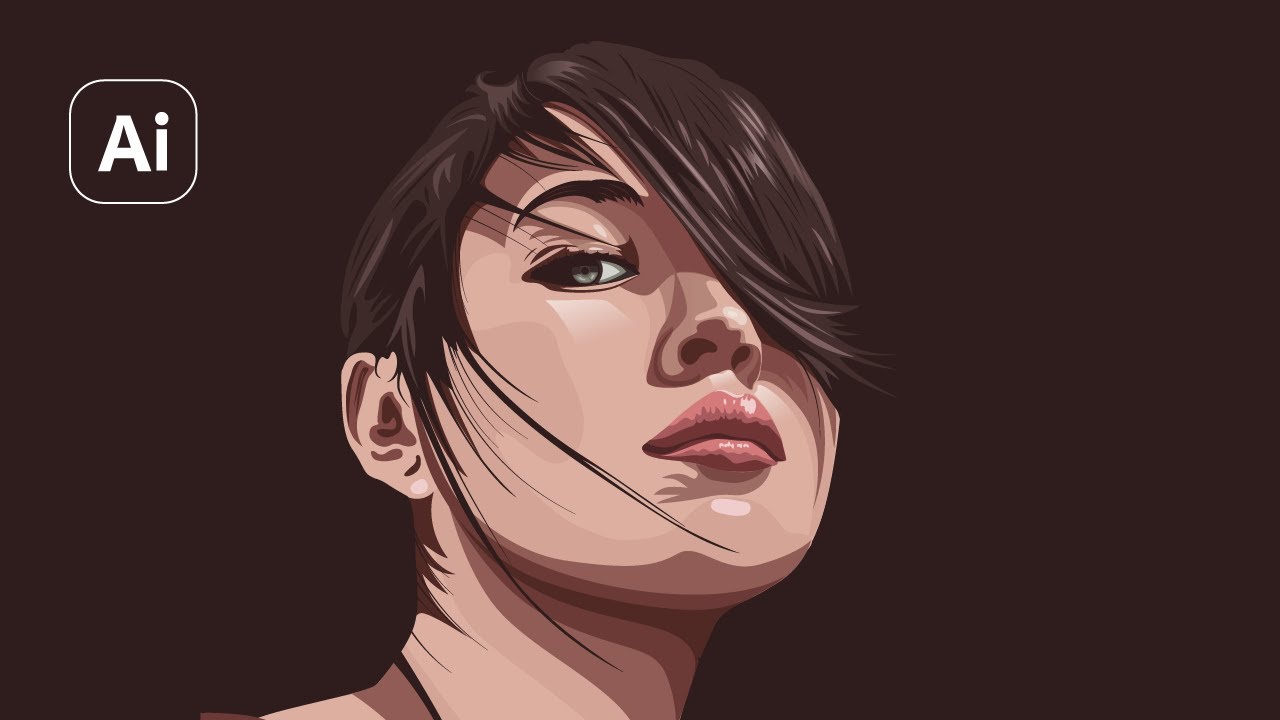
Introduction: Vector portraits are captivating works of art that capture the essence and personality of individuals through intricate lines, shapes, and colors. Adobe Illustrator, with its powerful vector-based tools and versatile features, provides artists with a unique platform to create stunning and lifelike vector portraits. In this comprehensive guide, we’ll explore the step-by-step process of making vector portraits in Adobe Illustrator, covering everything from initial sketching to final touches.
Section 1: Understanding Vector Portraits 1.1 What are Vector Portraits?: Explore the concept of vector portraits and their significance as artistic representations of individuals, blending realism with stylized artistic expression. 1.2 Advantages of Vector Portraits: Examine the advantages of creating vector portraits, including scalability, versatility, and the ability to edit and modify artwork seamlessly. 1.3 Types of Vector Portraits: Discover different styles and approaches to vector portraits, from photorealistic renderings to abstract interpretations, and their respective techniques and applications.
Section 2: Getting Started with Adobe Illustrator 2.1 Overview of Adobe Illustrator: Familiarize yourself with the Illustrator workspace, tools, and essential features for creating vector portraits. 2.2 Setting Up Your Document: Create a new document in Illustrator, specifying the dimensions, resolution, and color mode suitable for your vector portrait project. 2.3 Importing Reference Images: Import reference photos or sketches into Illustrator to use as a guide for your vector portrait, ensuring accuracy and likeness in your artwork.
Section 3: Sketching and Outlining 3.1 Sketching the Portrait: Begin by sketching the basic outlines and shapes of the portrait using Illustrator’s drawing tools or a graphics tablet, focusing on proportions and composition. 3.2 Creating Base Shapes: Use basic shapes and paths to outline the major features and facial elements of the portrait, breaking down complex forms into manageable components. 3.3 Refining the Outline: Refine the outlines and shapes of the portrait, adjusting curves, angles, and proportions to achieve a more accurate representation of the subject’s features.
Section 4: Adding Details and Features 4.1 Building Layers and Depth: Work on multiple layers to add depth and dimension to your vector portrait, using layering techniques to separate different elements and features. 4.2 Adding Facial Features: Focus on adding facial features such as eyes, nose, mouth, and ears, paying close attention to details such as expression, symmetry, and proportion. 4.3 Enhancing Hair and Clothing: Render hair and clothing using a combination of shapes, paths, and gradients, capturing texture, flow, and volume to enhance realism in your vector portrait.
Section 5: Color and Shading 5.1 Selecting Color Palette: Choose a suitable color palette for your vector portrait, considering factors such as skin tone, lighting conditions, and mood or atmosphere. 5.2 Applying Base Colors: Fill in base colors for different areas of the portrait, using gradients and blends to create smooth transitions and subtle variations in tone. 5.3 Adding Shading and Highlights: Use gradients, blends, and transparency effects to add shading, highlights, and depth to your vector portrait, enhancing realism and dimensionality.
Section 6: Refinement and Detailing 6.1 Fine-Tuning Details: Pay attention to small details and nuances in the portrait, refining lines, shapes, and colors to capture the subject’s likeness and personality accurately